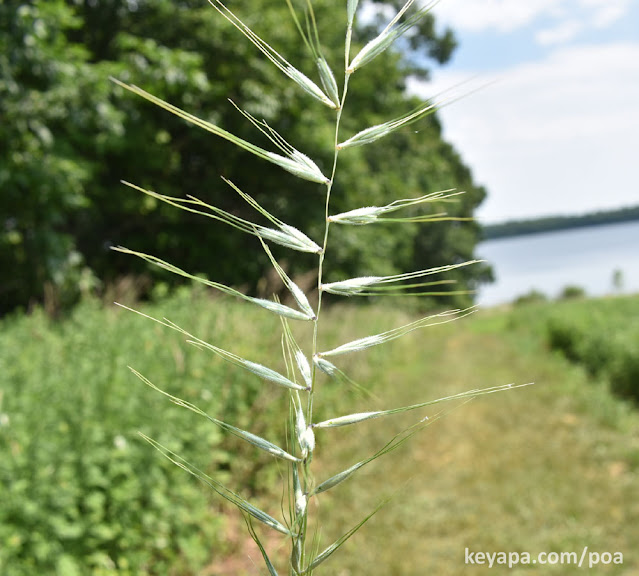This is probably one grass species that you will easily recognize.
It has amazing looking spikelets that look sharp and pointy - perhaps sharp enough to to prick your thumb, though I did not try.
I encountered it during a NJ hike in July 2020, in a somewhat shaded location next to a river.
I later identified it as Elymus hystrix, and it is a species that likes filtered light and nearby water, which describes exactly the location of the specimen that I found.
E. hystrix is called Eastern bottlebrush, due to the overall shape of its inflorescence. Its specific epithet is from the Greek hystrix, which means "hedgehog", an apt moniker given the spiny looking spikelets. It's a perennial grass and can self-pollinate, which I assume is a trait that is sometimes useful when one is separated from the rest of the population.
The specimens I encountered were huddled amongst the other vegetation, just native plants blending in with the crowd. It was such a difference from (for example) Taeniatherum caput-medusae (medusahead grass) or Imperata cylindrica (Cogon grass), both of which exist in dense clusters that exclude most other species.
 |
| Cogon grass existing in very dense clusters |
I admit I like it. It's a clean looking native species with an unusual and readily identifiable inflorescence (always a boon to a noobie like me who has trouble identifying graminoids) and perhaps I'll see it again during hikes in the Shenandoah area this month.


No comments:
Post a Comment